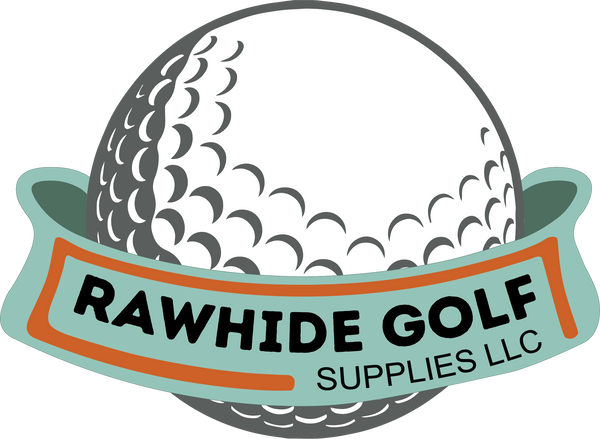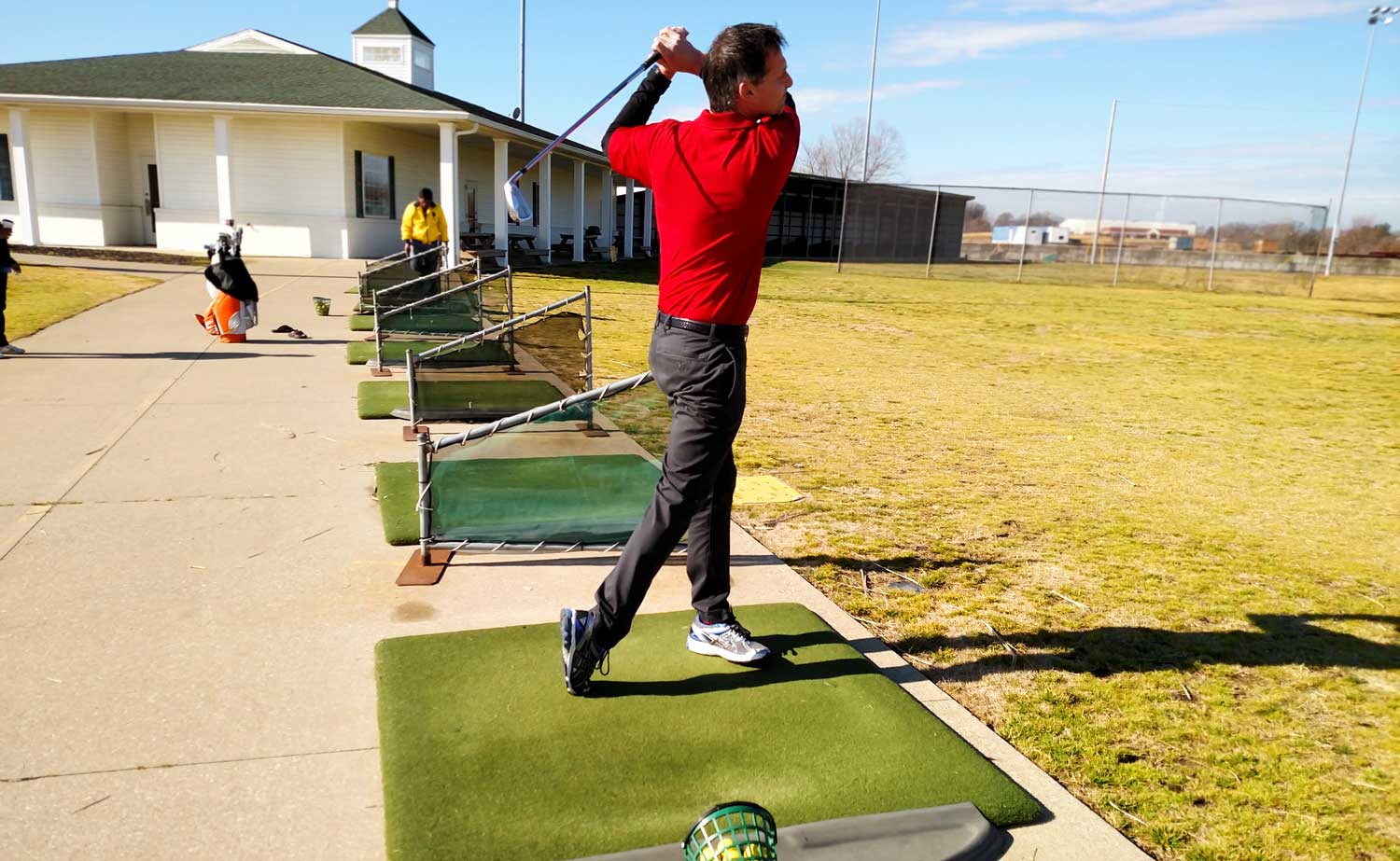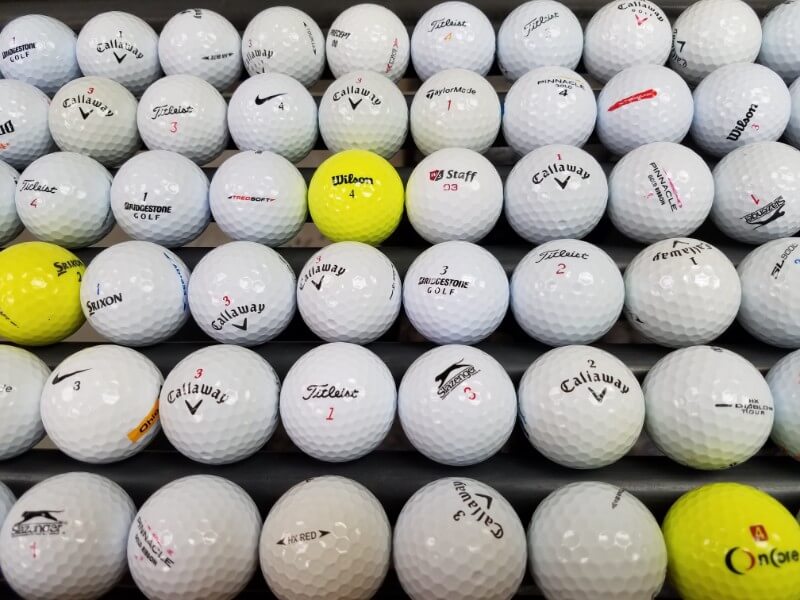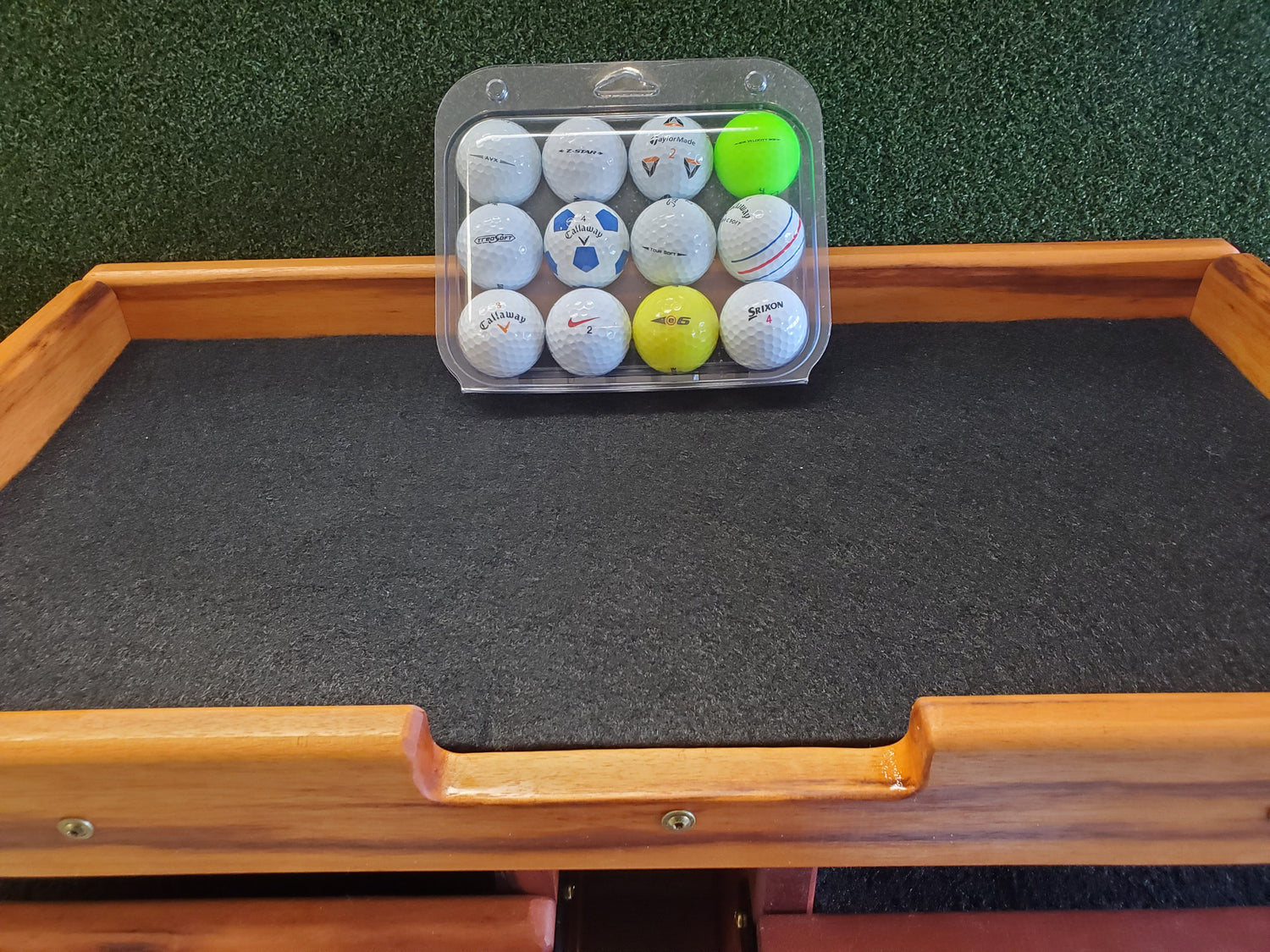What Golf Ball Should I Use & Does it Really Matter?
Share
What Golf Ball Should I Use & Does it Really Matter?
To an amateur or even the average golfer, the golf ball they use might not really matter. As the game evolves, so should the equipment you are using. Among the items you should pay special attention to is the golf ball.
What is the Difference Between Golf Balls
Construction
One of the key differences between golf balls is the style of construction. The most common golf ball construction styles are two and three-piece. The average golfer is likely to use a two-piece golf ball that is usually made of a single core, which is coated by a hard covering. On the other hand, three-piece golf balls have a layer of rubber that sits between the core and the ball’s exterior cover. Apart from the number of layers, another key difference between them is that the covering in a three-piece golf ball is softer.
Compression
Compression refers to how much the golf ball compresses against the clubface once you take your swing. Golf balls have 80, 90, or 100 compression ratings. The higher the compression, the further the ball will travel.
Spin
The spin refers to the backspin imparted by your club’s loft. Golf balls can have a high, medium, or low spin. High spin balls will spin the most once you strike them, which means that they have a longer carry. Low spin balls are designed to have reduced side spin, thus helping you achieve a straighter shot. Medium spin golf balls provide you with the perfect balance between high and low spins.
Dimples
Most balls have between 250-500 dimples that have an average depth of 0.010”. The dimples you see on a golf ball are meant to create an aerodynamic lift that enables your golf ball to remain aloft for longer. The ball remains aloft because the dimples create a layer of turbulent air that clings to the ball’s surface, which reduces the ball’s drag.
The Feel
How your golf ball feels largely depends on its construction. Balls with an ionomer covering are bound to feel hard on impact with your club’s face. Those with the urethane rubber will feel soft.
Do These Differences Matter?
Golf balls with low compressions are softer and will compress more easily. This helps handicap players and beginners as these balls can travel further despite slower swings. High compression balls are ideal for experienced players who seek to achieve great distances while retaining their control.
When it comes to the spin, high spin balls might not be ideal on the fairway but will be perfect for the greens. Low spin golf balls are suitable for golfers who struggle with higher distances as well as those who have a tendency to slice rather than hit the ball. Mid spin balls are suitable for the vast majority of golf players as they provide a balance between the two. They are suitable for most golf course conditions and circumstances.
The dimple pattern has a huge effect on the golf ball’s trajectory. A golf ball with a smooth surface might travel for only half of the distance covered by a ball with dimples under the same conditions. There are claims that the dimples also reduce sidespin, thus keeping your shots straighter.
Most pricey golf balls feature a urethane cover. This creates a good grip when the ball comes into contact with the club’s face, thus generating a higher spin. On the downside, such balls are easily destroyed. Cheaper balls are coated with an ionomer cover, which is simply a plastic but with elastic properties. These elastic properties make these balls quite durable and less prone to scuff marks. If you are just starting out, golf balls with an ionomer cover could be your best bet.
Soft golf balls tend to fly lower and spin more while harder balls might fly higher and spin less.
Which Ball Should I Be Using?
Golf balls have undergone tremendous change thanks to the advancing technology. More balls that promise to deliver control, distance, and spin are introduced into the market every year. The modern golfer has to choose from dozens of ball styles from one manufacturer. While this makes it relatively easier to find a golf ball that suits your play style, it compromises the buying decision.
Firm balls are resilient and have the ability to travel longer distances. However, they can be rather hard to control, particularly on the green. On the other hand, softer balls will cover shorter distances but are perfect for the green. However, an experienced golfer might strike a soft ball as far as a beginner or an average player using a hard or firm ball.
If you have a high handicap or a beginner, it would probably be in your best interest to choose a ball with an ionomer cover. Such balls have minimal slicing, hooking, and your ball will travel higher compared to those with urethane covers.
While in this article, we have discussed only two and three-piece golf balls, there are one, four, and five-piece balls. The higher the layers in your golf ball, the better the distances they might cover, and the more sophisticated they are. Highloft best suited for more experienced golfers. As far as the construction style is concerned, you will need to consider your skill level.
You will also need to consider the spin ratings on your preferred golf balls. Low spin balls will roll further on the green but will not stay airborne for long. On the other hand, high-spin balls have shorter rolling distance but will fly longer. When choosing a high spin ball, choose one that’s suitable for your swing style. Hard high-spin balls will slice more severely in the event you fail to land a less than perfect shot.
How Should I Go About the Buying Process?
When buying your golf balls, consider all the mentioned factors, and list down designs and styles you think might be perfect for you. As such, research each of them by going through reviews from golfers who’ve used them. Reviews will give you an honest assessment of the ball.
You can also ask for recommendations from a local golf shop. Be honest about your swing, your strengths, and weaknesses. As they are more knowledgeable, the staff could even give you customized suggestions. You might also want to buy cheap but different golf balls and practice using each. After all, the only way to tell which ball is right for you is when you play.
In spite of all the above factors, settle for a ball that suits your intended budget. You can considerably save money by buying second-hand golf balls. Here at Rawhide Golf Ball Co, we have a wide range of balls to suit your needs. Contact us today for more information!




